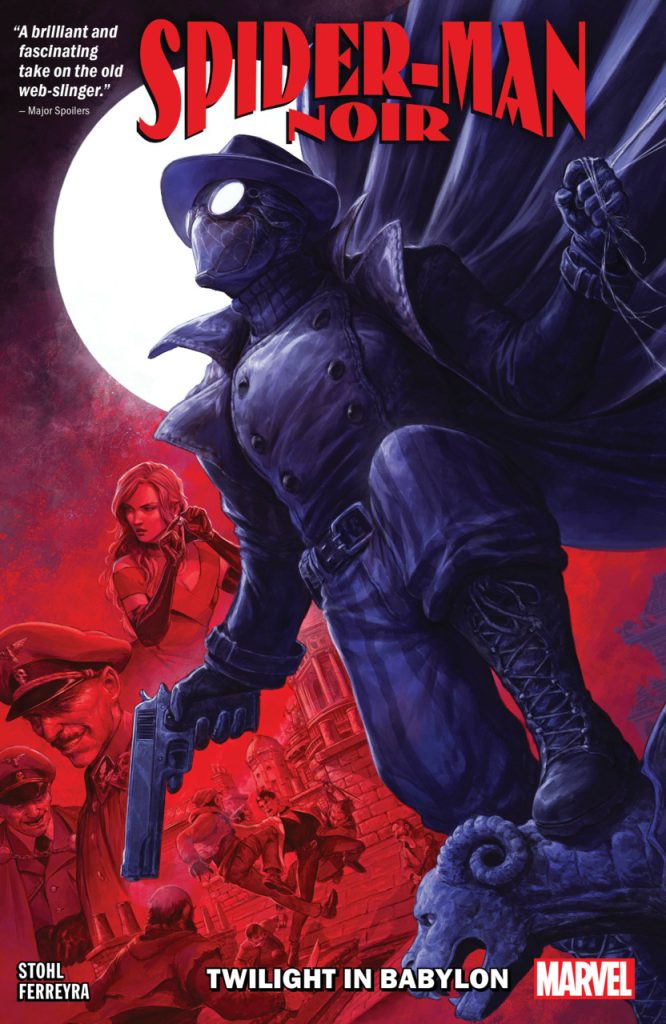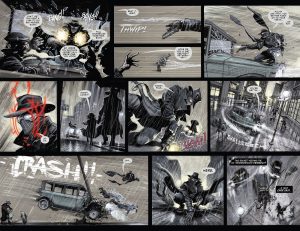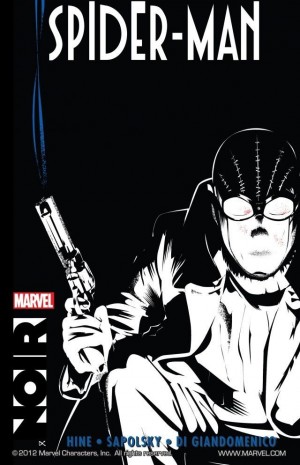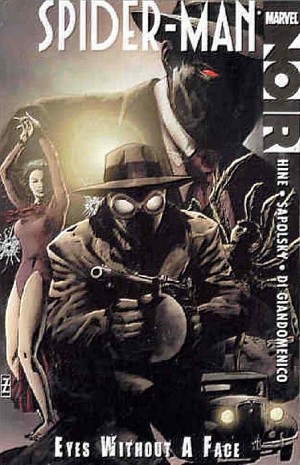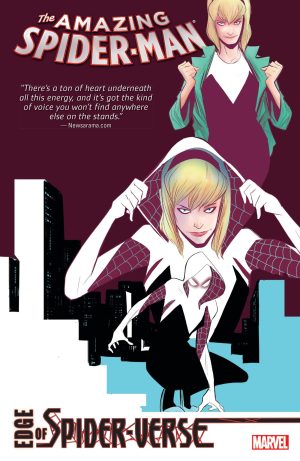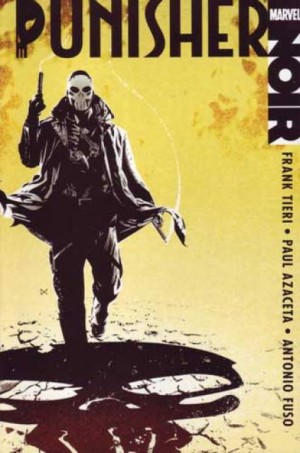Review by Ian Keogh
The pulp-era equivalent of Spider-Man was given a new lease of life as one of the more recognisable alternatives filtered into Spider-Verse. His death there was but a temporary impediment, and a subsequent meeting with Miles Morales proved the highlight of Spider-Verse: Spider-Zero. Pleasingly, the artist of that story Juan Ferreyra is back for Twilight in Babylon.
Ferreyra again restricts most of the art to greytones in order to evoke the late 1930s, but makes good use of the occasional colour for highlighting. That’s just the icing, though, as Ferreyra’s first class layouts maximise the period and the excitement. His lighting evokes noir cinema, the characters constantly only partially seen, yet that’s only the opening chapter as this Peter Parker is taken well beyond his comfort zone. Ferreya frequently works in spreads, perhaps better seen digitally than with the middles folded into printed binding, but all having a stunning cinematic flow to the action. Those with planes, trains and automobiles are wonders to behold, but Ferreyra’s ultimate statement is a walk through a cabaret club in the company of Tony Stark.
Margaret Stohl’s back catalogue is primarily young adult fantasy, but she’s also written novels starring Marvel characters for the young adult market. Twilight in Babylon, then, is an opportunity to expand her themes by taking investigator Peter Parker on a tour around world on the verge of war. It’s somewhat the risk for a character so entrenched in the specific milieu of New York, but with a few quibbles the result is an adventure making good use of the times with sharp, sardonic dialogue and considerable mystery. Stohl’s enjoying herself a lot.
One of those quibbles is museum curator Dr. Huma Bergman, her very name a nod to the quintessential wartime thriller Casablanca. She’s Indiana Jones in a silk dress, and Stohl likes her too much. She’s the one dragging Peter from place to place, and so also the person moving the plot forward, with Peter little more than the hired help. There’s a considerable shift in the fourth chapter, though, meaning Peter has a little more prominence. As Stark’s presence indicates, Stohl’s not shy about including guest stars, or more correctly alternate versions of known faces, but there’s a logic to them, and some good revelations accompany them, broadening the story. A version of Spider-Man’s old enemy Electro is among them, given a glorious period makeover by Ferreyra.
From a conventional start for Spider-Man Noir, Stohl keeps escalating the dangers to an excellent finish to a thoroughly enjoyable romp. Unfortunately, though, Marvel’s print run falls way short of demand, ensuring the paperback version commands very high prices if you can find it at all. Is a reprint too much to ask? If not, as noted, Ferreyra’s art is possibly even more stunning digitally.
